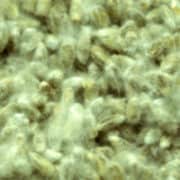How are your Mushrooms Produced?
This is a very important question to ask since there are many aspects of mushroom production that need to be properly understood in order to make educated decisions about a specific mushroom product.
Is your mushroom product actually a mushroom?
Are your mushrooms cultivated on natural organic materials? Materials such as wood logs or nutrient enriched sawdust, straw or compost? Are the mushrooms grown in greenhouses, with natural light, fresh air and seasonal temperatures?
Mushrooms cultivated on natural materials in natural light have the full complement of vitamins, minerals, and naturally produced active compounds. These are mushrooms grown as nature intended.
Remember, like many plants, mushrooms are a product of their environment. They draw minerals from their growth medium or substrate, and water from the same substrate or rain. If the substrate is high in certain minerals, the mushrooms will absorb more of these minerals. If the growth medium has certain compounds that can be used as building blocks or precursors for important active compounds, then the mushroom will be able to produce those compounds readily and efficiently.
The growth medium or substrate is very important for the natural production of the active compounds specific to different species of mushrooms.
Maybe you are buying a mycelium product that is produced in a sterile laboratory? This fungal mycelium is generally grown on sterile rice or grain. These grains are sterilized inside a plastic bag for hours at over 100 degrees C. The substrate material, rather than being a rich diverse nutritional matrix, is ordinary and featureless grain. Nutritionally grain primarily consists of starch.
Do you want a product grown naturally or a product produced in a sterile laboratory?
The mycelium is planted in this sterile grain and then lives and grows inside this sterile plastic bag, breathing sterile air, and growing in the darkness of a sterile room in a sterile laboratory. The mycelium is growing in a completely artificial environment on artificial nutrients. This process is not natural. It is everything that people seeking natural products are trying to avoid. So the real question is, what are you buying? Is it laboratory grown, sterilized, myceliated rice or grain? Or is it a naturally grown mushroom.
Some US companies claim that their products come from local forests. This is of course impossible since many of the most important beneficial mushrooms don’t even grow in the US.
Shiitake does not grow naturally in the US. The important Cordyceps species do not grow naturally in the US. Reishi and Maitake both primarily grow on the East coast. Claims about mushrooms coming from local forests are simply misleading.
These same companies don’t even sell mushrooms. They sell sterile, lab grown myceliated grain. Mycelium is not a mushroom and does not produce the complex compounds found in mushrooms. And yet most of these companies talk about the mushrooms they grow and have “mushroom” all over their product labels and informational materials. Look very carefully at the product label and be sure “Supplement Facts” says mushroom and not mycelium.
Important Note.
Beneficial mushrooms contain active beta-D-glucans. These are the most important compounds in mushrooms. The majority of the scientific research is based on beta-glucans. Mushrooms also contain no starch. Starch is an alpha-glucan found in grains. It has no health enhancing value. Don’t be fooled by polysaccharide analyses. These will also include starch.
High quality mushroom products will have high levels of beta-glucans and low levels of starch.
Laboratory testing confirms that mycelium produced on grain is low in beta-glucans and high in starch. This is the complete opposite of a genuine beneficial mushroom.
Do not be mislead by mycelium producers. Ask for an analysis or do your own. Be sure to test for starch. We are happy to produce testing results for beta-glucans and starch in our products.


